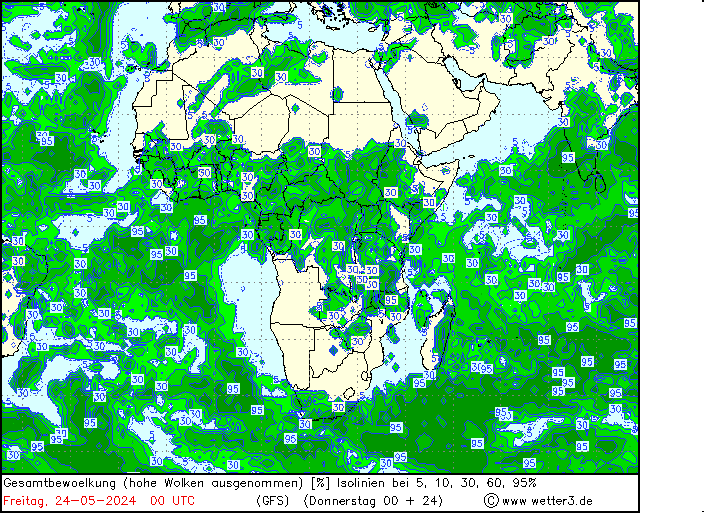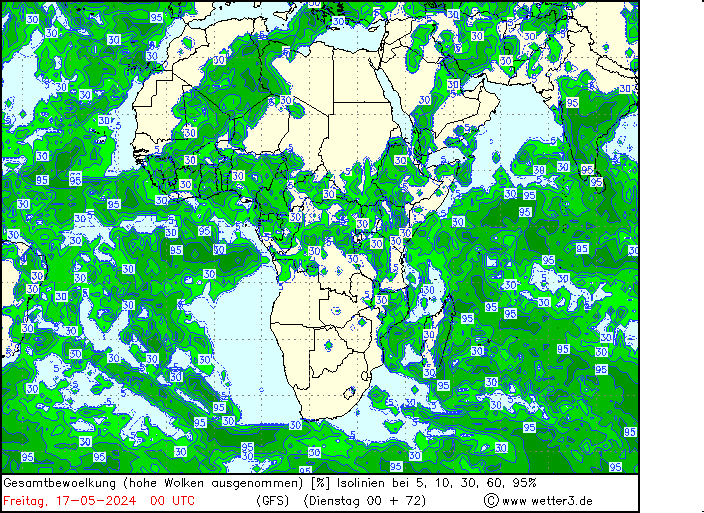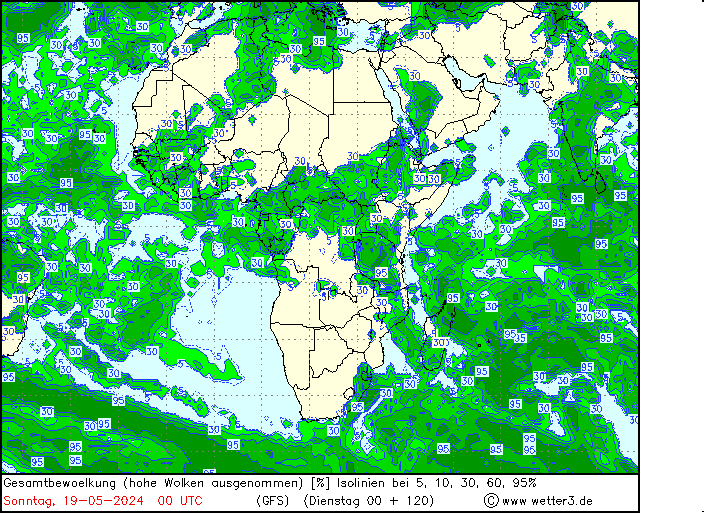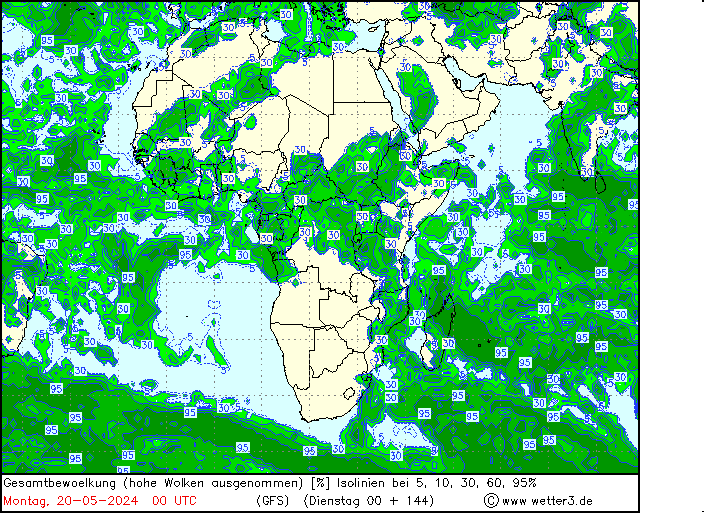Amir Mohsen
متخصص بخش هواشناسی
Determining Meteorological Parameters from a Sounding
The temperature and dewpoint curves that are plotted on the Skew-T are used for much more than simply identifying the temperature and dewpoint at a certain level in the atmosphere. There are many parameters that are not directly reported on a sounding but that can be calculated by using the lines discussed in Section 1.
Mixing Ratio (w) – the ratio of the mass of water vapor to the mass of dry air in a sample of moist air.
Units: g of water vapor per kg of dry air
Procedure: Read the value of the saturation mixing ratio line that crosses the dewpoint curve at that pressure.
Procedure: Read the value of the saturation mixing ratio line that crosses the dewpoint curve at that pressure.
Saturation Mixing Ratio (w[SUB]s[/SUB]) – the mixing ratio that a sample of air would have if it were saturated.
Units: g of water vapor per kg of dry air
Procedure: Read the value of the saturation mixing ratio line that crosses the temperature curve at that pressure.
Procedure: Read the value of the saturation mixing ratio line that crosses the temperature curve at that pressure.
Relative Humidity (RH) – the ratio of the amount of water vapor in a volume of air to the amount of water vapor that the volume could hold if it were saturated
Units: expressed in percent
Procedure: Compute from the equation: RH = 100% * (w/w[SUB]s[/SUB]) = 100%*(e/e[SUB]s[/SUB])
Procedure: Compute from the equation: RH = 100% * (w/w[SUB]s[/SUB]) = 100%*(e/e[SUB]s[/SUB])
Vapor Pressure (e) – the part of the total atmospheric pressure that is contributed by water vapor
Units: millibars
Procedure: From the dewpoint curve at a given pressure level, follow the isotherms to the isobar at 622 mb. Read the value of the saturation mixing ratio line that passes through this point to get vapor pressure.
Procedure: From the dewpoint curve at a given pressure level, follow the isotherms to the isobar at 622 mb. Read the value of the saturation mixing ratio line that passes through this point to get vapor pressure.
Saturation Vapor Pressure (e[SUB]s[/SUB]) -- the partial pressure that water would add to the total atmospheric pressure if the air was saturated
Units: millibars
Procedure: From the temperature curve at a given pressure level, follow the isotherms to the isobar at 622 mb. Read the value of the saturation mixing ratio line that passes through this point to get saturation vapor pressure.
Procedure: From the temperature curve at a given pressure level, follow the isotherms to the isobar at 622 mb. Read the value of the saturation mixing ratio line that passes through this point to get saturation vapor pressure.
Wet Bulb Temperature (T[SUB]w[/SUB]) – the lowest temperature to which a volume of air at constant pressure can be cooled by evaporating water into it.
Units: Kelvin
Procedure: From the dewpoint curve at a given pressure level, draw a line upward along a saturation mixing ratio line. Then from the temperature curve at the given pressure level, draw a line upward along a dry adiabat until it intersects with the first line drawn. From this intersection, follow a saturation adiabat down to the given pressure level. The value of the isotherm running through this point is the wet bulb temperature.
Procedure: From the dewpoint curve at a given pressure level, draw a line upward along a saturation mixing ratio line. Then from the temperature curve at the given pressure level, draw a line upward along a dry adiabat until it intersects with the first line drawn. From this intersection, follow a saturation adiabat down to the given pressure level. The value of the isotherm running through this point is the wet bulb temperature.
Potential Temperature (θ) – the temperature a parcel of air would have if it were brought dry-adiabatically down to 1000 mb.
Units: Kelvin
Procedure: From the temperature curve at a given pressure level, follow the dry adiabat that intersects the T curve down to 1000 mb. The isotherm value at this intersection is the potential temperature of the parcel at the given pressure.
Procedure: From the temperature curve at a given pressure level, follow the dry adiabat that intersects the T curve down to 1000 mb. The isotherm value at this intersection is the potential temperature of the parcel at the given pressure.
Wet Bulb Potential Temperature (θ[SUB]w[/SUB]) -- the wet bulb temperature a parcel of air would have if it were brought down to 1000 mb saturation-adiabatically.
Units: Kelvin
Procedure: Find the wet bulb temperature and follow the saturation adiabat to the 1000 mb isobar. The temperature value at this intersection is the wet- bulb potential temperature.
Procedure: Find the wet bulb temperature and follow the saturation adiabat to the 1000 mb isobar. The temperature value at this intersection is the wet- bulb potential temperature.
Equivalent Temperature (T[SUB]E[/SUB]) -- the temperature of a parcel if all the moisture was condensed out by a moist adiabatic process using latent heat to heat the parcel.
Units: Kelvin
Procedure: From the dewpoint curve at the given pressure level, follow a line upward along a saturation mixing-ratio line. Then from the temperature curve at the given pressure level, follow a line upward along a dry adiabat. The intersection of these two lines is the LCL. From this intersection, follow a saturation adiabat upward to a pressure where the saturation and dry adiabats are parallel; where all the moisture has been condensed out of the parcel. Then follow a dry adiabat down to the original pressure level. The temperature at this level is the equivalent temperature.
Procedure: From the dewpoint curve at the given pressure level, follow a line upward along a saturation mixing-ratio line. Then from the temperature curve at the given pressure level, follow a line upward along a dry adiabat. The intersection of these two lines is the LCL. From this intersection, follow a saturation adiabat upward to a pressure where the saturation and dry adiabats are parallel; where all the moisture has been condensed out of the parcel. Then follow a dry adiabat down to the original pressure level. The temperature at this level is the equivalent temperature.
Equivalent Potential Temperature (θ[SUB]E[/SUB]) – the temperature of a parcel if all the moisture was condensed out by a moist adiabatic process using latent heating to heat the parcel and then the parcel brought dry-adiabatically down to 1000 mb.
Units: Kelvin
Procedure: Find the equivalent temperature for the given pressure level, then from this point, follow a dry adiabat down to 1000 mb.
Procedure: Find the equivalent temperature for the given pressure level, then from this point, follow a dry adiabat down to 1000 mb.
Virtual Temperature (T[SUB]v[/SUB]) – the temperature at which dry air would have the same density as moist air at the same pressure.
Units: Kelvin
Procedure: The virtual temperature can be computed by the equation: T[SUB]v[/SUB] = T + (w/6)
Procedure: The virtual temperature can be computed by the equation: T[SUB]v[/SUB] = T + (w/6)
CAPE (Convective Available Potential Energy) – the maximum energy available on an ascending air parcel.
Units: Joules per kilogram: (J/kg)
Procedure: To find CAPE on a Skew-T/Log-P Diagram you first must find the level of free convection (LFC). From the LFC, follow the air parcel up along a moist adiabat until it intersects with the temperature curve. This will be the level of neutral bouyancy (LNB). The area to the left of the temperature curve between the LFC and the LNB is CAPE. CAPE is often called Positive Area which is proportional to the amount of kinetic energy the parcel can gain from the environment.
Procedure: To find CAPE on a Skew-T/Log-P Diagram you first must find the level of free convection (LFC). From the LFC, follow the air parcel up along a moist adiabat until it intersects with the temperature curve. This will be the level of neutral bouyancy (LNB). The area to the left of the temperature curve between the LFC and the LNB is CAPE. CAPE is often called Positive Area which is proportional to the amount of kinetic energy the parcel can gain from the environment.
CIN (Convection Inhibition) – the energy needed to lift an air parcel vertically and pseudoadiabatically from its originating level to its level of free convection (LFC).
Units: Joules per kilogram: (J/kg)
Procedure: Take the surface dew point temperature and raise it adiabatically. At the same time, take the surface temperature and raise it pseudoadiabatically. Raise these two parcels until they intersect. From the point of intersection, raise the parcel pseudoadiabatically until it crosses the temperature curve. This point is the level of free convection. The area under the LFC and to the right of the temperature curve is CIN. CIN is often called Negative Area which is proportional to the amount of kinetic energy that must be supplied to move the parcel to the LFC.
Procedure: Take the surface dew point temperature and raise it adiabatically. At the same time, take the surface temperature and raise it pseudoadiabatically. Raise these two parcels until they intersect. From the point of intersection, raise the parcel pseudoadiabatically until it crosses the temperature curve. This point is the level of free convection. The area under the LFC and to the right of the temperature curve is CIN. CIN is often called Negative Area which is proportional to the amount of kinetic energy that must be supplied to move the parcel to the LFC.
Lifting Condensation Level (LCL) -- the height at which a parcel of air becomes saturated when it is lifted dry-adiabatically.
Units: millibar
Procedure: From the dewpoint curve at the given pressure level, follow a line upward along a saturation mixing-ratio line. Then from the temperature curve at the given pressure level, follow a line upward along a dry adiabat. The intersection of these two lines is the LCL.
Convection Condensation Level (CCL) -- the height to which a parcel of air if heated sufficiently from below will rise adiabatically until it is just saturated. This is the height of the base of cumuliform clouds produced by surface heating.
Units: millibar
Procedure: Find the average mixing ratio in the lowest 50 mb and follow this mixing ratio line up to where it intersects the temperature sounding. This point is the height of the CCL.
Procedure: Find the average mixing ratio in the lowest 50 mb and follow this mixing ratio line up to where it intersects the temperature sounding. This point is the height of the CCL.
Convection Temperature (T[SUB]c[/SUB]) -- the surface temperature that must be reached to start the formation of convection clouds by surface heating.
Units: Kelvin
Procedure: First determine the CCL on the sounding. From the CCL on the temperature curve, follow a dry adiabat downward to the surface. The temperature at this intersection is the convection temperature.
Procedure: First determine the CCL on the sounding. From the CCL on the temperature curve, follow a dry adiabat downward to the surface. The temperature at this intersection is the convection temperature.
Mixing Condensation Level (MCL) -- the lowest height at which saturation occurs after the complete mixing of the layer.
Units: millibar
Procedure: Follow the mixing ratio line that passes through the surface dewpoint up to where it intersects the temperature sounding. This is the MCL.
Procedure: Follow the mixing ratio line that passes through the surface dewpoint up to where it intersects the temperature sounding. This is the MCL.
Level of Free Convection (LFC) -- the height at which a parcel of air that is lifted dry or moist adiabatically becomes less dense (warmer) than the surrounding air.
Units: millibar
Procedure: Find the region of positive area on the sounding. The pressure level at the bottom of the positive area that is closest to earth's surface is the LFC. Just below this point, the temperature of the parcel and the temperature of the environment should be equal.
Procedure: Find the region of positive area on the sounding. The pressure level at the bottom of the positive area that is closest to earth's surface is the LFC. Just below this point, the temperature of the parcel and the temperature of the environment should be equal.
Equilibrium Level (EL) -- the height where the temperature of a positively buoyant parcel of air becomes equal to that of the surrounding atmosphere and above this level the parcel becomes negatively buoyant.
Units: millibar
Procedure: Locate the positive area on the sounding. The equilibrium level is the point at the top of the positive area where the temperature curve and the saturation adiabat that goes through the LFC meet.
Procedure: Locate the positive area on the sounding. The equilibrium level is the point at the top of the positive area where the temperature curve and the saturation adiabat that goes through the LFC meet.
Note: Many of the temperature variables need to be converted from Celcius to Kelvin, (C+273=K).



























































































